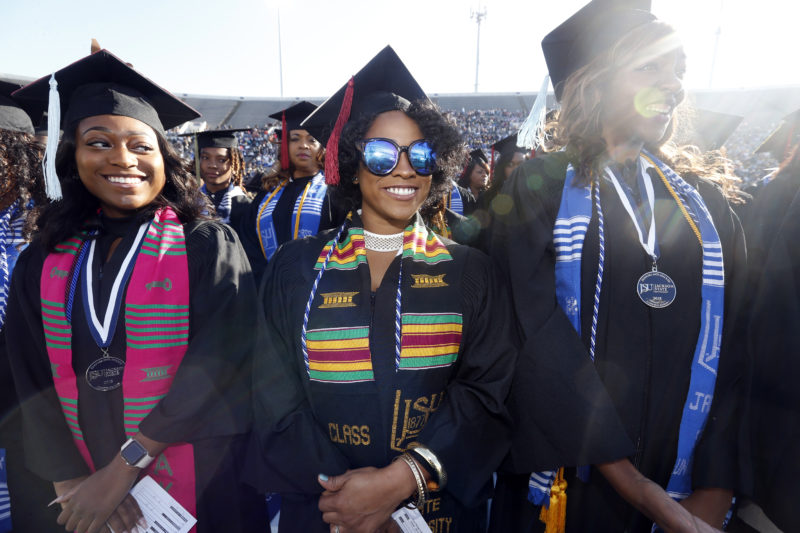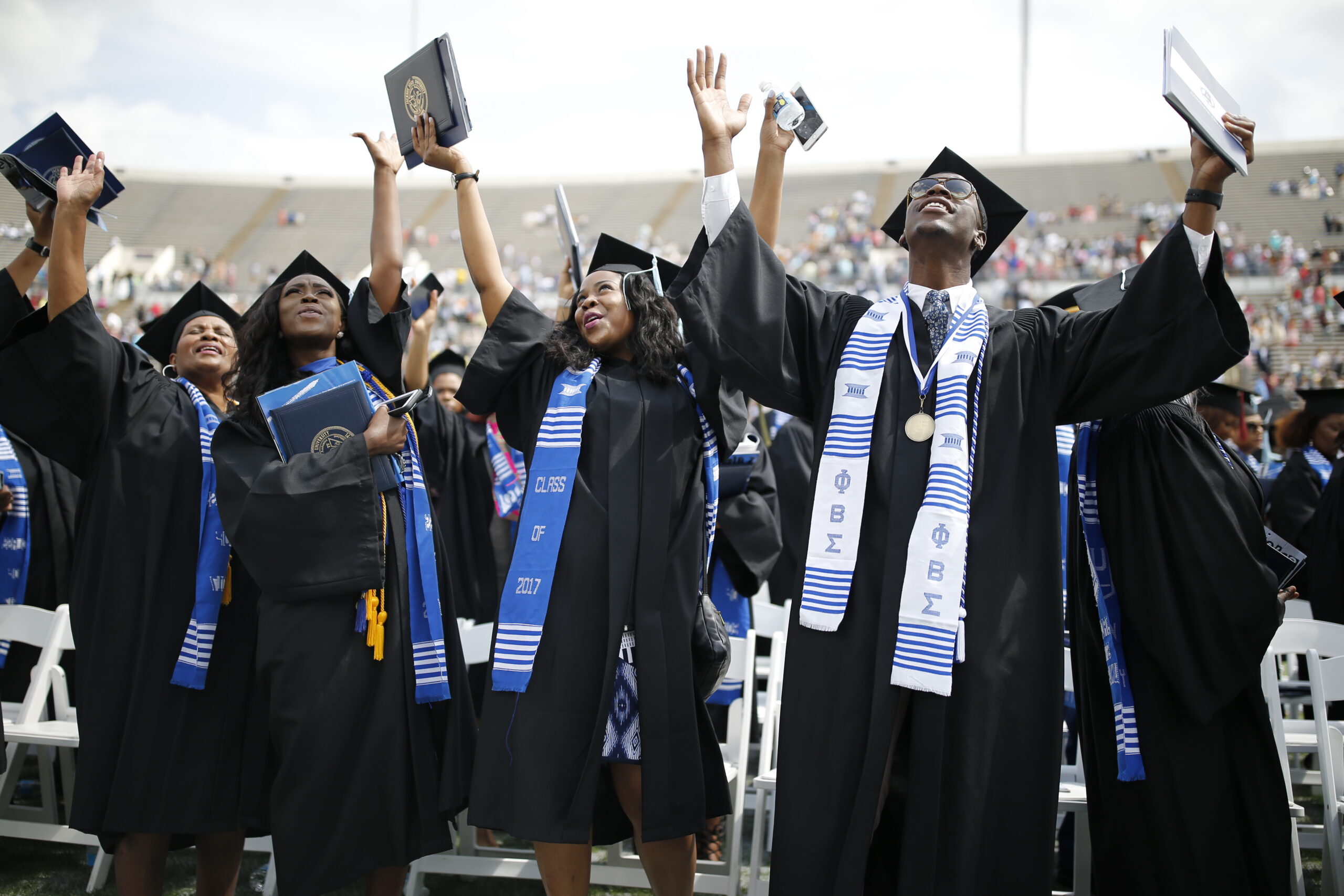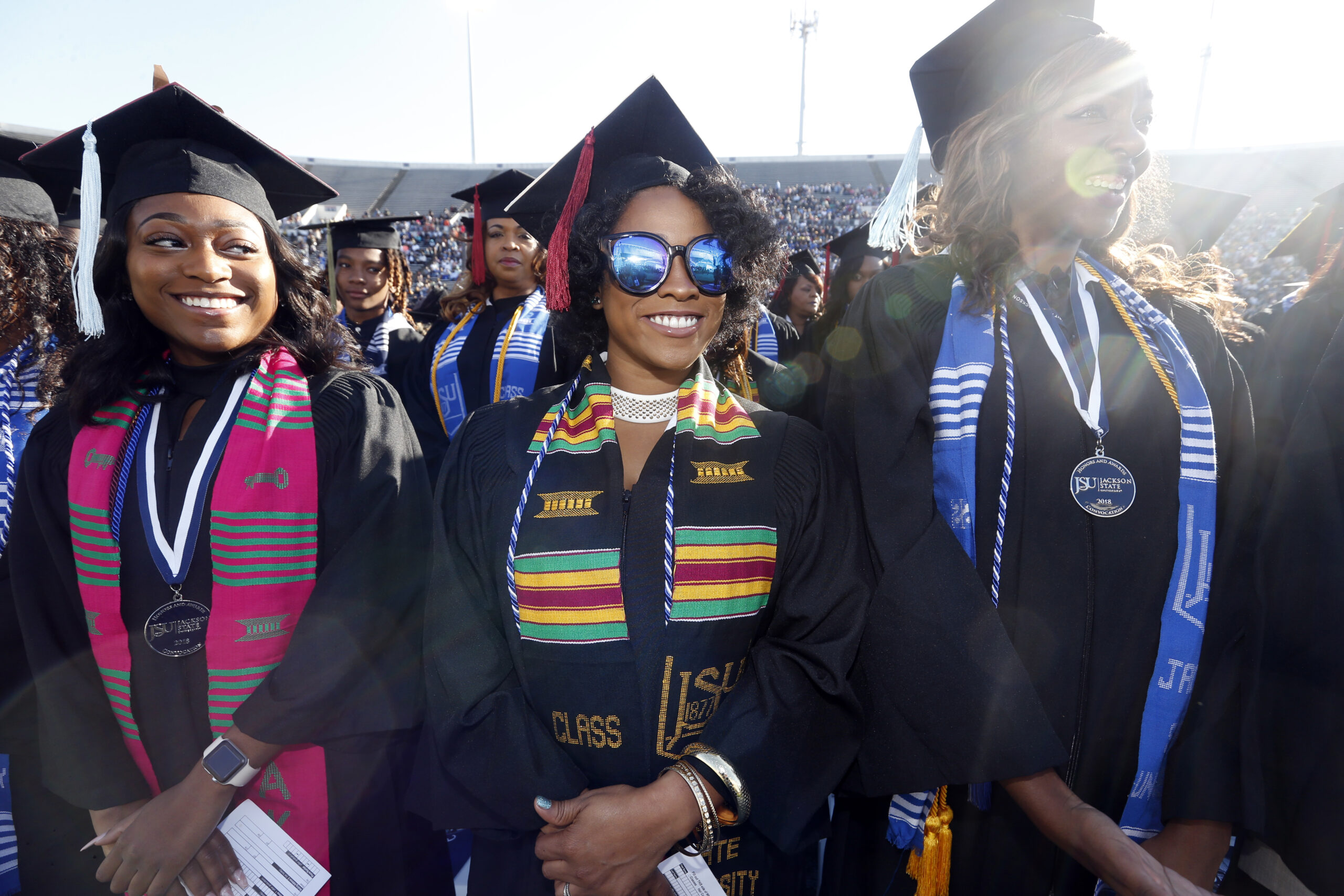‘Tell Us More’ is a content series aimed at highlighting PhotoShelter clients and industry innovators who are marketing disruptors — challenging the status quo with creative content strategies and campaigns. Take notes on the expert advice shared below and ask Kentrice further questions in the comments!
On September 3rd, 2021, a week ahead of the scheduled celebration for National HBCU Week (Sep. 7-10,) President Joe Biden released a statement promising an astronomical increase in equitable investments and support for America’s foundational network of Historically Black Colleges and Universities.
This network of 100+ institutions has provided safe and ready access to a post-secondary education to Black Americans for the past 184 years and they’ve fostered some of the most legendary and accomplished minds of all time—Langston Hughes, W.E.B Dubois, Toni Morrison, Thurgood Marshall, Gladys Knight, and Vice President Kamala Harris to name a few.
Following the footsteps of all former Presidents since the ‘80s, President Biden also announced the signature of an Executive Order which aims to expand Government-wide support and encourage necessary collaboration between private, public, and philanthropic partners to “eliminate systemic barriers impeding HBCU participation in Federal programs.”
In a recently published article written by Adam Harris for The Atlantic, it’s clear that HBCU staff members, faculty and students alike are already feeling the impact of this governmental commitment.
Adam reports, “Each year, the federal government disperses about $1 billion to HBCUs through a mix of 15 programs such as Pell Grants and research and development contracts. ‘With all of this new funding, you’re talking about, in one year, potentially tripling what we would normally get,’ Walter Kimbrough, the president of Dillard University, a private HBCU in New Orleans, told me. ‘I can’t think of anything that compares to this historically.’”
This enormous governmental investment and commitment, while overdue for most Black Americans, is huge.
Concluding his statement, President Biden also extended the official celebration week by two additional days (now, Sept. 5-10.) He wrote, “This is only the beginning of our work to support HBCUs and the remarkable students they empower and grow. This week and every week, we will continue to celebrate and advance the historic and ongoing success of our HBCUs — because we know that their success is America’s success.”
To learn how one HBCU in the PhotoShelter community celebrates the historic accomplishments of their alumni, current students and faculty outside of this special week, we connected with Kentrice Rush, Digital Media Manager at Jackson State University to learn how the JSU creative marketing team champions their community through creative content campaigns, special event programming and community management.
1. When did you join the Jackson State University community?
Kentrice: I attended Jackson State University from 2008 to 2012 and earned my Bachelor of Business Administration (BBA) in Marketing. After earning my MBA from a different HBCU in 2014, I returned to JSU in 2015 as part of the University Communications team.
2. What drew you to JSU’s campus community?
Kentrice: I fell in love with Jackson State while attending a recruitment event during my senior year of high school. I was drawn to JSU’s academic excellence, the beauty of the campus, and the warmth of the people. Something about the school felt right. I left the event saying, “I’m going to Jackson State.”
During my matriculation at JSU, my love for the university grew once I learned more about its history and achievements, and I was able to experience the atmosphere and sense of community.
I also met amazing faculty and staff members who inspired me to want to work for the university at some point in my career. They had a genuine love for JSU and its students, and I aspired to have the impact they had on the university. Now, some of them are my colleagues, so it feels full-circle.
Watch The Sonic Boom of the South’s explosive 2021 Southern Heritage Classic halftime performance and you’ll beam with pride, too.
3. What helped you make the decision to join PhotoShelter?
Kentrice: When I first started at JSU, we used Google Drive to send, receive, and archive photos. We still use Google Drive, but mostly for videos and other files.
Our university photographer, Charles A. Smith, initiated our move to using PhotoShelter. He was searching for a way to archive and organize the various photos taken for JSU. We started using PhotoShelter only a few months after I began working at JSU.
My transition to PhotoShelter was easy, and I embraced it. When I was a student at JSU, I was the public relations chairman for a campus organization. I saw the need to archive photos we took during events and make them available to the organization’s members, so, I created an account on an image hosting site. There is a definite need for tools or software such as PhotoShelter.
4. What does being a part of an HBCU digital team mean to you?
Kentrice: Being part of an HBCU digital team means a lot to me. It’s a great opportunity, but it’s also a huge responsibility. Social media is a very important tool for providing information. We have the ability to educate people on our institutions and influence their perceptions.
5. What is the history behind the founding of JSU?
Kentrice: Jackson State University was founded on October 23, 1877, with 20 students. It was founded as Natchez Seminary in Natchez, Mississippi, with the assistance of the American Baptist Home Mission Society. In November 1882, the school was moved to Jackson; in March 1899, the curriculum was expanded, and the name was changed to Jackson College.
The state assumed support of the college in 1940, assigning to it the mission of training teachers. Between 1953 and 1956, the curriculum was expanded to include a graduate program and bachelor’s programs in the arts and sciences; the name was then changed to Jackson State College in 1956.
Further expansion of the curriculum and a notable building program preceded the elevation of Jackson State College to university status on March 15, 1974. In 1979, Jackson State was officially designated the Urban University of the State of Mississippi.
6. Do you know how your celebratory work affects the student body?
Kentrice: Our celebratory work has a profound effect on our student body. It gives them a sense of pride when they are celebrated and their peers are celebrated. It shows that the university cares about their accomplishments and wants to show them to the world. It also provides motivation for others so they can be featured one day.
Some of my favorite photos to post are ones from our commencement ceremonies.
You see the joy the graduates have in achieving a major milestone in their lives:
7. How do you balance showcasing the lived Black student experience while simultaneously highlighting living legacies of alums?
Kentrice: We strive to find various ways of showcasing our students and alums.
For students, we have a video series, “JSU Arts,” which we use to highlight students involved in the performing arts.
We also have People of JSU, a first-person narrative social media series that gives students an opportunity to tell a variety of stories, from casual interests to growth and triumph.
For alumni, our public relations team creates Black History Month profiles and Women’s History Month profiles of prominent alumni. And throughout the year, we post stories about the accomplishments of our students and alumni alike.
The content is well received by both groups. Students enjoy seeing alumni stories, in part because of the motivational effect. They see the success of someone who graduated from their institution. Alumni enjoy seeing student stories, in part because they show that the institution they love and graduated from is still thriving. And students and alumni enjoy celebrating their peers.
8. What should people know about how to support HBCU’s and their life-affirming work?
Kentrice: There are many ways to support HBCUs. Of course, one major way is to give financial contributions, but you can also show support in other ways. Support can come from teachers, counselors, and administrators informing their students about the brilliance of HBCUs and the opportunities to attend our institutions.
Support can come from mentorship, internship, and networking opportunities for our students. It can also come from media opportunities where students, graduates, employees, and supporters can showcase their HBCU and tell their stories. There is a lot of history and talent at our HBCUs, and we want to show who we are.
You can also support JSU students and recent grads by donating gently used or new job-appropriate attire to their Tiger Career Closet donation program.
To learn more about Kentrice’s work at Jackson State University, tune in to the Social Media Roundtable session from The Collaboration Summit.






